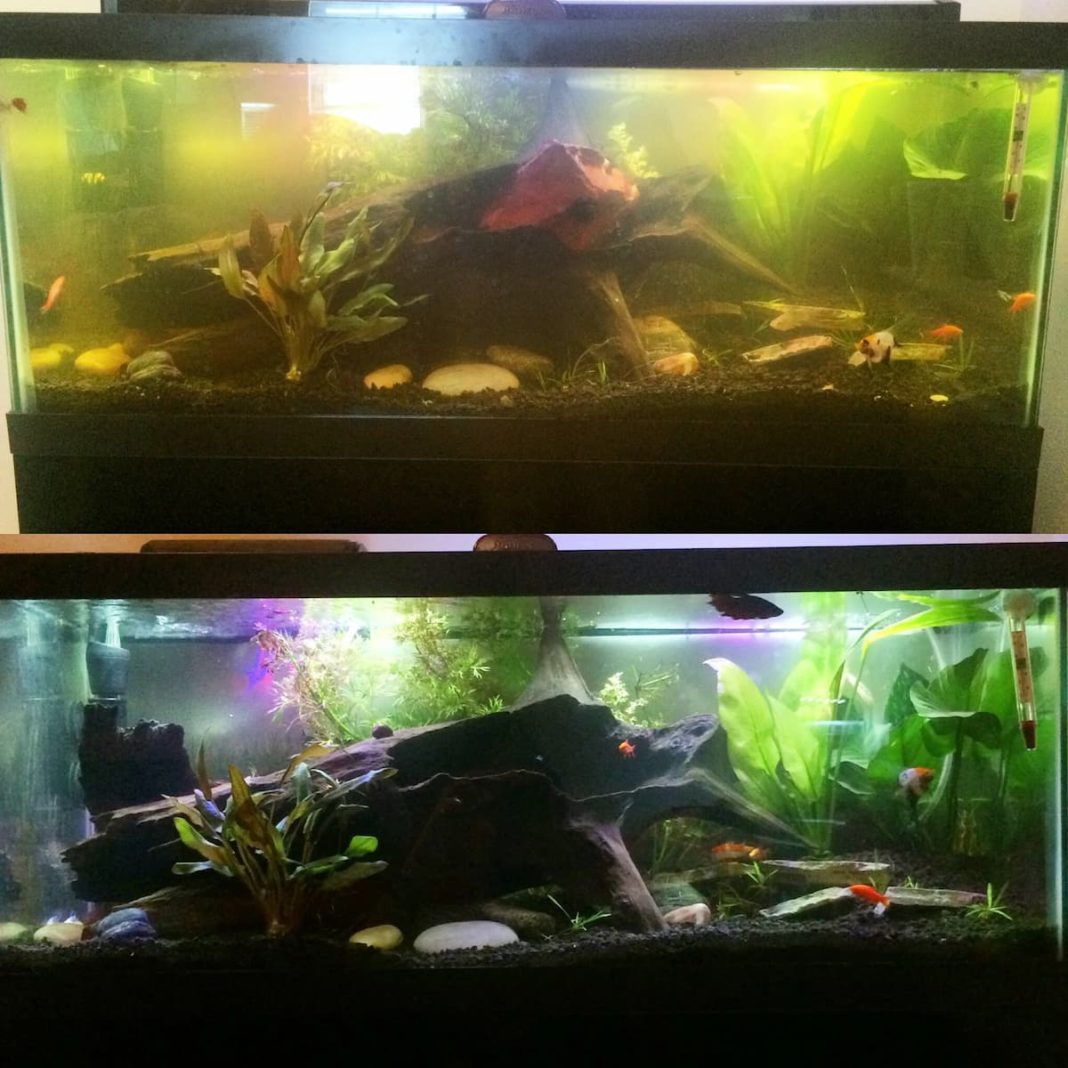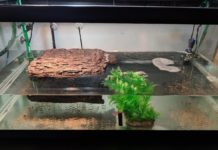Quicklinks:
- Does Purigen Remove Tannins?
- How Do Tannins Affect Aquariums?
- The Effects Of Tannins In Water
- Removing Tannins With Purigen
- Purigen Alternatives
- Why Your Tank Has Too Much Tannins
- How To Get Rid Of Tannins In Driftwood?
Does Purigen Remove Tannins?
Does Purigen remove tannin? In short, yes, Purigen can be used for removing tannins. If you have added some wood recently and hate the murky brown colouration that has been produced in your water, Purigen can be helpful to clear the problem along with some water changes.
Purigen is used to absorb tannins in the aquarium and should remove them from the water overnight. Although tannins will continue to leach from most woods for a while, keep the Purigen in your filter until you’re confident that it has run out. Another method for removing tannins is to use activated carbon, although it doesn’t seem to be as effective.
How Do Tannins Affect Aquariums?
Tannins are water-soluble polyphenols, which are naturally occurring compounds that are abundant in plants and historically used for tanning. The primary symptom of it is the distinct brown/yellow colors it leaves in an aquarium.
As tannins are abundant in plant life and if an aquarium has newly added driftwood in it, the tannins in the wood will quickly leach into the water, making the tank look murky.
The Effects Of Tannins In Water
Tannins can cause a brownish or yellowish tint in aquarium water. Although the discoloration of water isn’t a significant problem and won’t harm fish, tannins are usually acidic, resulting in the pH in the water slowly lowering which can ultimately harm the fish.
While some fish will thrive in slightly acidic soft water, like species from South America, fishes from other parts of the world won’t last long in acidic water.
Removing Tannins With Purigen
Although the discolored look of aquarium water won’t hurt fish, it still takes part of the joy of having an aquarium in the first place. An aquarium that doesn’t look clear prevents you from seeing the full beauty of the fish and some of the plant life. The main reason aquarists want to remove tannins is to see their aquarium in all its glory.
Although there are different ways to remove tannins from an aquarium. The two that we’ll cover are activated carbon and using the Purigen product. These two methods have different effects and are used depending on the inhabitants of the aquarium.
Purigen Alternatives
Activated Carbon
Activated carbon is probably the most well-known filtration media for aquariums. It’s made from carbonaceous material, like coal or coconut. The carbonaceous material is processed to enhance its absorption and adsorption capabilities.
The most common use of activated carbon in aquariums is granular activated carbon. The most common carbonaceous material used for aquariums is bituminous coal (black coal).
How Activated Carbon Filters Aquarium Water
Activated carbon has adsorption and absorption properties. Absorption refers to the capacity to trap contaminants within the pores of the filter, while adsorption is the trapping of chemical pollutants.
The problem with activated carbon is that it will also filter fish treatment. So, if you’re treating fish in your tank, you’ll first need to remove the activated carbon filter.
Something else that needs to be taken into consideration with activated carbon is that it needs to be replaced every month or so. Aquarists normally replace the activated carbon filter whenever they’re cleaning the gravel.
Why Your Tank Has Too Much Tannins
Fish Waste
Fish waste material will naturally make your aquarium’s water dirty. Keep in mind that these types of waste can be very harmful for the aquarium’s inhabitants.
Another form of fish waste comes from uneaten food, which the fish leave. This leftover food waste in the tank starts to decay in time.
So, it’s best to do a regular clean-up of your aquarium, as you’ll need to rid of agents that change your fish tank water to brown or yellow.
Decaying Plants
Decaying plants can also make a tank’s water to turn brown or yellow.
You can tell whether plants are decaying by their color. If you start to see the plants are changing into a yellowish color, or notice the leaves of these plants are falling, then your plant’s time is up.
Decaying plants is a massive issue for aquatic tanks with many plantations, as these plants can generate and increase the fish tank’s nitrates, worsening the health of the living animals in the aquarium.
In some cases, the water in your aquarium will change its color for no obvious reason, which is common.
How To Get Rid Of Tannins In Driftwood?
You can use the two methods mentioned below to remove the tannin off driftwood.
Boiling Driftwood
Initially, before introducing newly bought driftwood into your aquarium, you can boil the piece of wood for around 1 ½ hour, dry the piece of driftwood and then put it in the tank.
Remember that you may still see a bit of brownish or yellowish color in the water even after boiling the wood.
With time, the brown water color will disappear entirely after conducting the necessary water changes in your aquarium.
Adding A New Piece Of Wood
Keep the wood in a separate water tank (if you have one), letting the piece rest for a few hours until the water in the tank changes its color.
Once you’ve seen the water completely change its color into a brownish or yellowish color, repeat the process until the water gets clear.
Once you’ve completed the process, you can put the piece of wood in your main tank. Although this method works well, it will take more time and effort, but it will be worth your time and effort in the end.
Conclusion
It’s always best to maintain the clarity of your aquarium. If you own an aquarium, then you’ll naturally want to see your fish and plant life as clearly as possible. So, if tannins get in the way of seeing your aquarium in its full majesty, you may want to use a product like Purigen.
As mentioned above, activated carbon is used for removing tannins in an aquarium, although it will raise the pH level. Purigen, on the other hand, combats the discoloration leaving the pH level alone.








